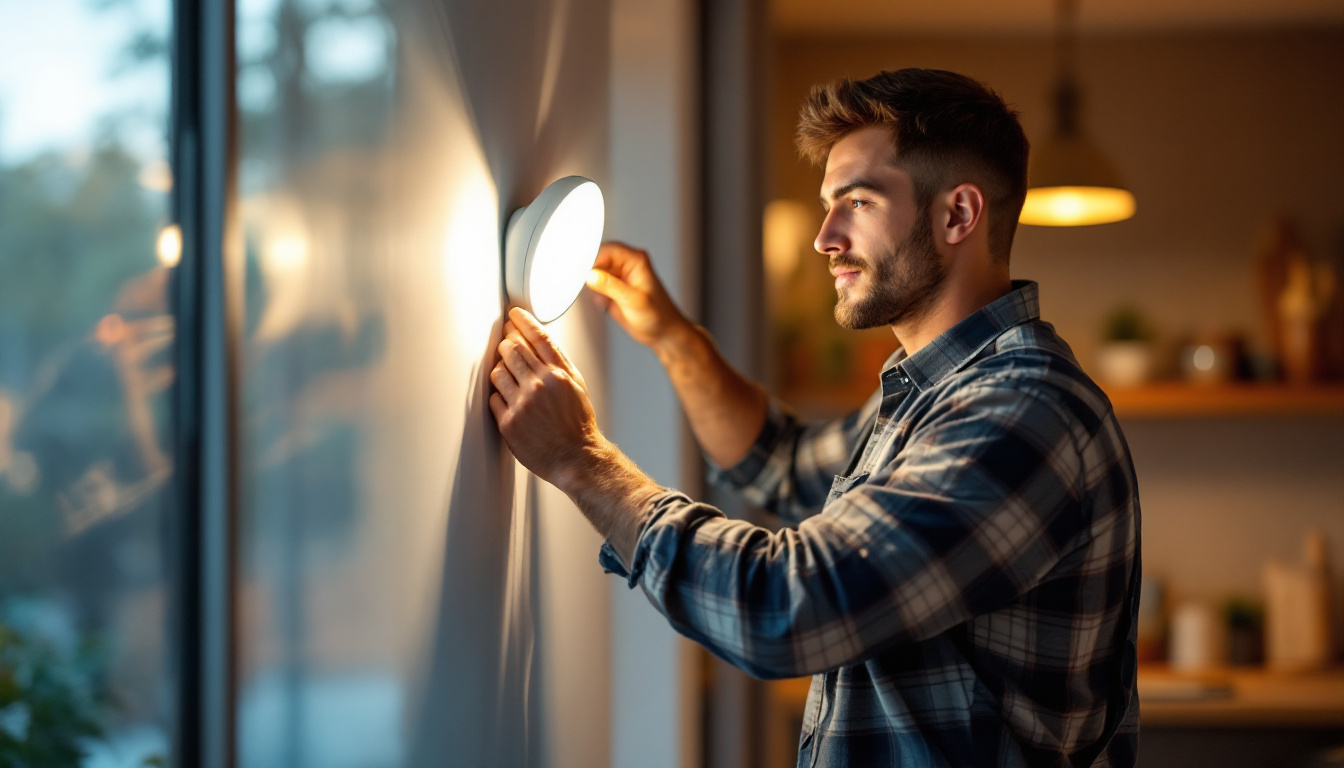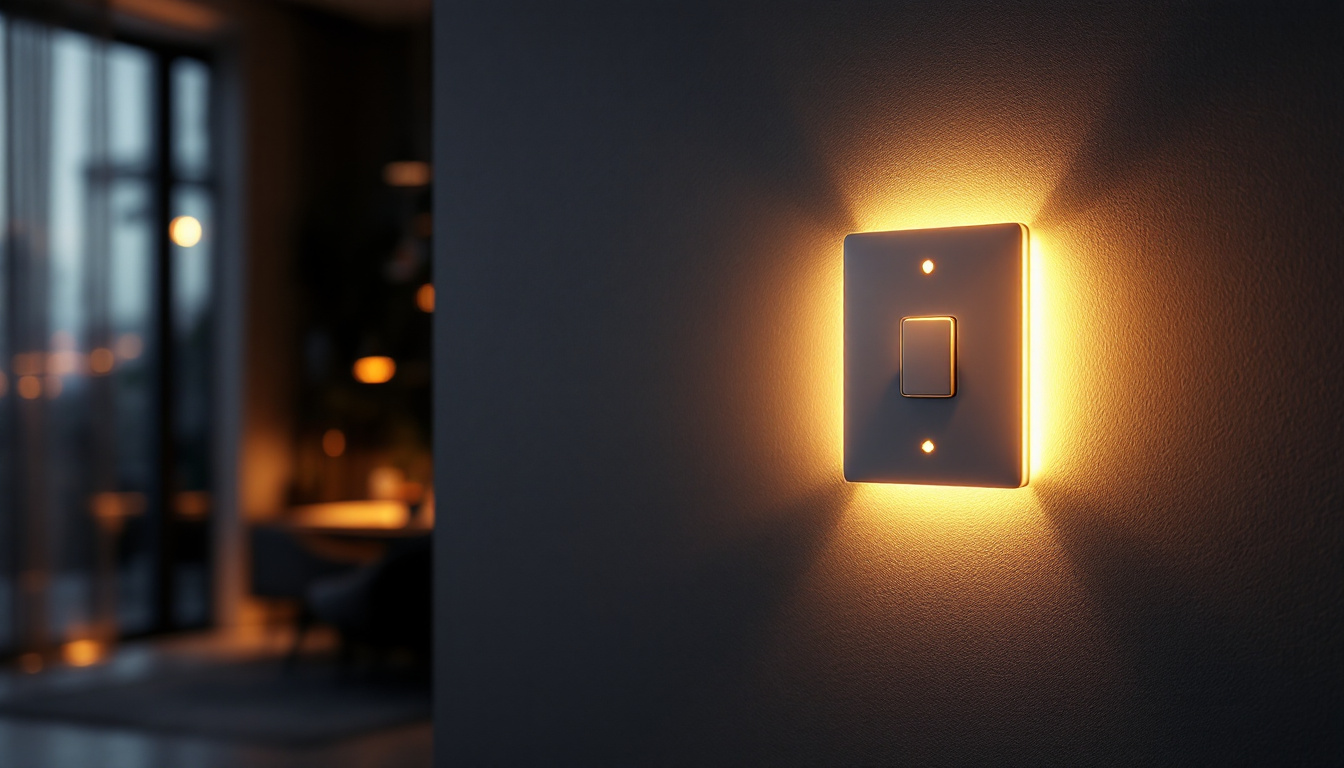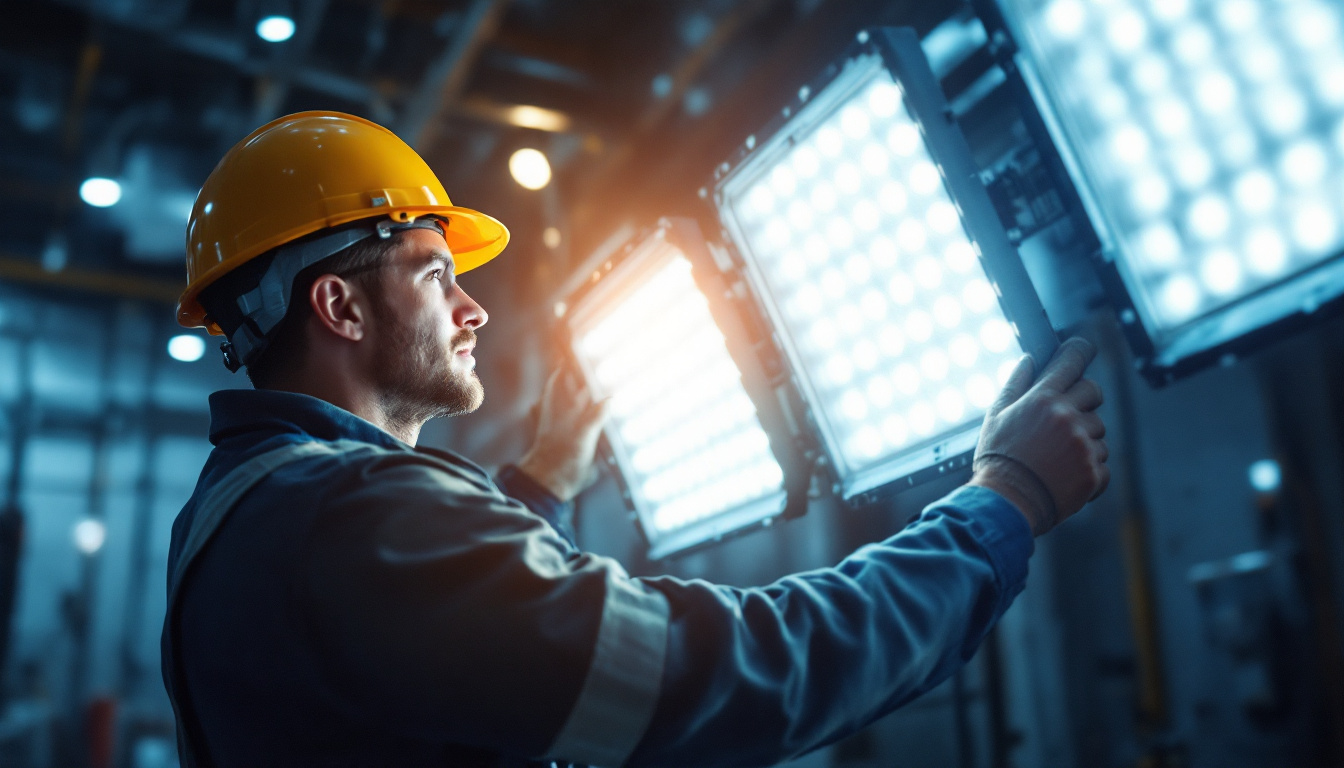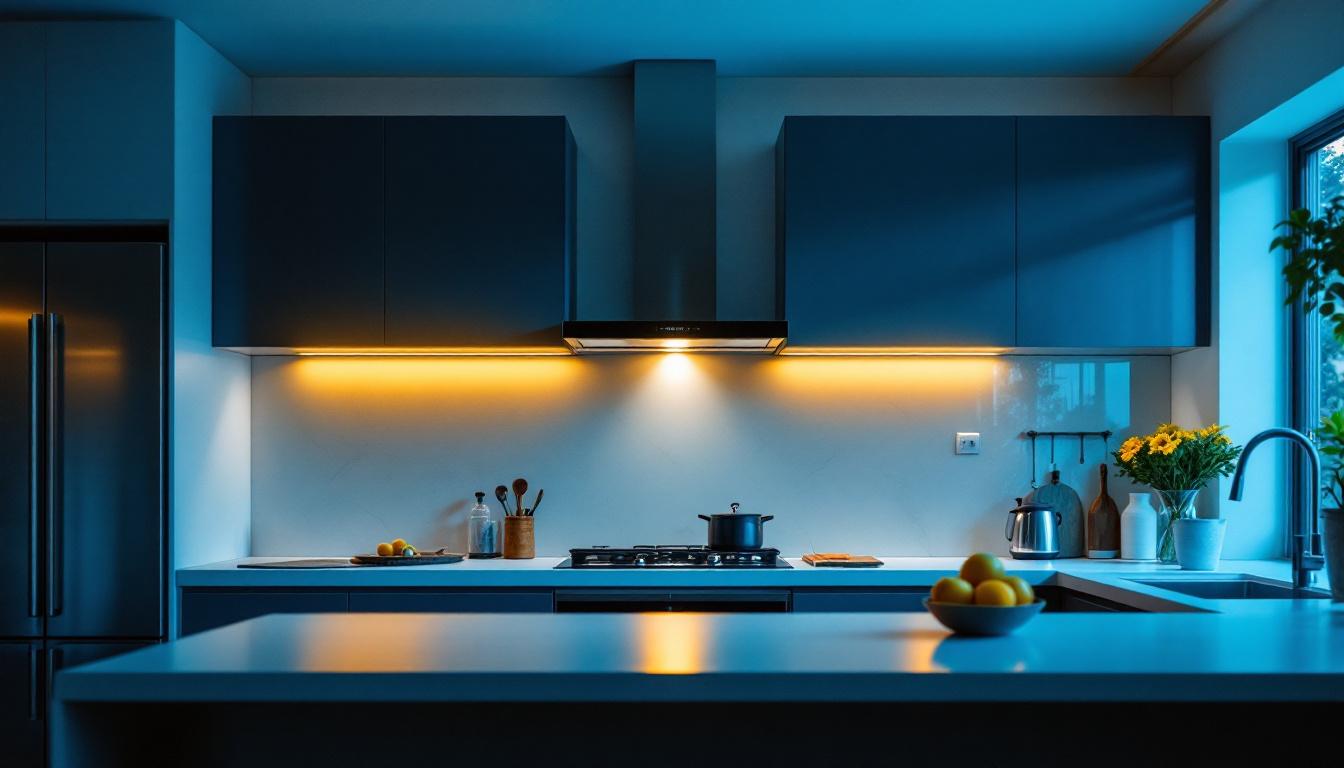
In the ever-evolving field of lighting technology, motion sensors have emerged as a pivotal component in enhancing efficiency and convenience. For lighting contractors, the integration of the best light motion sensors into their projects can not only streamline operations but also elevate the end-user experience. This article explores the transformative impact of motion sensors, their benefits, and how they are reshaping the way contractors approach their work.
Motion sensor technology has advanced significantly over the years, transitioning from rudimentary systems to sophisticated devices that offer a range of functionalities. These sensors are designed to detect movement within a specified area, triggering lighting systems to activate automatically. This innovation is particularly beneficial in commercial, residential, and outdoor settings, where energy efficiency and security are paramount. With the growing emphasis on smart home technology, motion sensors have become integral components in creating automated environments that enhance convenience and safety.
Moreover, the integration of motion sensors with smart home systems allows for remote monitoring and control via smartphones or tablets. Homeowners can receive alerts when movement is detected, providing peace of mind even when they are away. This capability not only enhances security but also allows for energy management, as homeowners can monitor and control lighting based on occupancy, further reducing energy consumption.
There are several types of motion sensors available, each with unique features that cater to different applications. The most common types include passive infrared (PIR), ultrasonic, and dual-technology sensors. PIR sensors detect heat emitted by objects, making them ideal for indoor spaces where human presence is expected. Ultrasonic sensors, on the other hand, use sound waves to identify movement, which allows them to cover larger areas, making them suitable for expansive environments. These sensors can be particularly effective in places like warehouses or large retail spaces, where monitoring foot traffic is essential for operational efficiency.
Dual-technology sensors combine both PIR and ultrasonic technologies, providing enhanced accuracy and reducing false triggers. This versatility makes them a popular choice among lighting contractors who need reliable solutions for varying project requirements. In addition to their effectiveness in preventing false alarms, dual-technology sensors can adapt to different environmental conditions, ensuring consistent performance in diverse settings, from busy office buildings to quiet residential neighborhoods.
When selecting motion sensors for lighting projects, contractors should consider several key features. Sensitivity settings allow for customization based on the environment, ensuring that the sensor responds appropriately to movement. Adjustable time delays enable contractors to set how long the lights remain on after activation, which can be crucial for energy savings. This feature is particularly beneficial in areas like hallways or staircases, where lights can be programmed to turn off after a set period of inactivity, thus minimizing energy waste.
Additionally, the detection range is an important factor. A sensor with a broader range can cover larger areas, reducing the number of units needed for installation. This not only lowers installation costs but also enhances the overall effectiveness of the lighting system. Finally, compatibility with existing lighting systems is essential to ensure seamless integration and optimal performance. As technology continues to evolve, many modern motion sensors now offer compatibility with LED lighting, which further enhances energy efficiency and longevity, making them an even more attractive option for both residential and commercial applications.
Incorporating motion sensors into lighting designs offers numerous advantages that can significantly impact both contractors and end-users. These benefits extend beyond mere convenience, influencing energy efficiency, security, and overall user satisfaction.
One of the most compelling reasons to adopt motion sensor technology is the potential for energy savings. By automatically turning lights on and off based on occupancy, these sensors help reduce unnecessary energy consumption. This is particularly beneficial in commercial spaces where lighting can be left on for extended periods, leading to inflated energy bills.
Moreover, many modern motion sensors are designed to work in conjunction with smart lighting systems, allowing for even greater control over energy usage. This integration can lead to significant cost savings over time, making it an attractive option for both contractors and clients. In fact, studies have shown that facilities equipped with motion sensors can reduce their lighting energy consumption by up to 30%, translating into substantial financial savings and a lower carbon footprint.
Motion sensors play a crucial role in enhancing security for residential and commercial properties. By illuminating areas when movement is detected, these sensors deter potential intruders and provide peace of mind for occupants. This feature is particularly valuable for outdoor lighting, where dark areas can become inviting targets for criminal activity.
Furthermore, the ability to integrate motion sensors with security systems allows for real-time alerts and monitoring, providing an additional layer of protection. Contractors can offer clients comprehensive security solutions that not only improve safety but also enhance the overall value of the property. In addition, many motion sensors now come equipped with advanced features such as night vision and smartphone connectivity, enabling users to monitor their premises remotely and receive instant notifications whenever unusual activity is detected.
For end-users, the convenience of motion sensors cannot be overstated. Lights that automatically turn on when someone enters a room eliminate the need to fumble for switches in the dark, enhancing accessibility and comfort. This is especially beneficial for elderly individuals or those with mobility challenges.
Additionally, the customizable features of motion sensors allow users to tailor their lighting experience to their preferences. Whether it’s adjusting sensitivity levels or setting time delays, these options empower users to create a lighting environment that suits their lifestyle. Beyond just functionality, motion sensors can also contribute to the aesthetic appeal of a space. By providing seamless transitions between light and dark, they create a more inviting atmosphere, enhancing the overall ambiance of homes and businesses alike. Furthermore, the integration of motion sensors with smart home systems allows users to control not only lighting but also other devices, such as thermostats and security cameras, creating a truly interconnected living environment that promotes comfort and efficiency.
While the benefits of motion sensors are substantial, there are also challenges that contractors must navigate when integrating these technologies into their projects. Understanding these challenges can help ensure successful implementation and client satisfaction.
One of the primary concerns with motion sensors is the potential for false triggers. Environmental factors such as pets, moving trees, or passing vehicles can inadvertently activate the sensor, leading to unnecessary lighting activation. This not only wastes energy but can also frustrate users.
To mitigate this issue, contractors should carefully assess the installation location and choose the appropriate sensor type. Adjusting sensitivity settings and positioning sensors strategically can help reduce the likelihood of false triggers, ensuring reliable performance.
Installing motion sensors can sometimes be more complex than traditional lighting systems. Contractors must have a thorough understanding of the technology and installation requirements to ensure optimal functionality. This may involve additional training or research to stay updated on the latest advancements in motion sensor technology.
Moreover, integrating motion sensors into existing lighting systems may require modifications to wiring or control systems, which can add to the overall project timeline and cost. Contractors should communicate these factors to clients to manage expectations effectively.
To maximize the benefits of motion sensors, contractors should adhere to best practices during the selection and installation process. These practices can help ensure that projects are completed efficiently and effectively, resulting in satisfied clients and successful outcomes.
Before selecting motion sensors, conducting a thorough site assessment is essential. This evaluation should include analyzing the layout of the space, identifying potential obstacles, and determining the specific lighting needs of the client. Understanding the environment will enable contractors to choose the most suitable sensor type and placement.
During the assessment, it’s also important to consider the client’s preferences and lifestyle. Engaging in discussions about their lighting habits and expectations can provide valuable insights that inform the selection process.
Many clients may not fully understand the capabilities of motion sensors or how they can enhance their lighting experience. Contractors should take the time to educate clients about the features and benefits of the chosen sensors, helping them appreciate the value of the investment.
Providing demonstrations or visual aids can be particularly effective in illustrating how the sensors work and the advantages they offer. This knowledge empowers clients to make informed decisions and increases their satisfaction with the final installation.
Like any technology, motion sensors require regular maintenance to ensure optimal performance. Contractors should advise clients on the importance of periodic checks and potential upgrades as technology advances. This proactive approach can help prevent issues and extend the lifespan of the installed systems.
Additionally, staying informed about emerging trends and innovations in motion sensor technology allows contractors to offer clients the latest solutions, enhancing their competitive edge in the market.
The integration of motion sensors into lighting projects represents a significant advancement in the field of lighting design and installation. For lighting contractors, understanding the benefits, challenges, and best practices associated with these technologies is crucial for success. By embracing motion sensor technology, contractors can not only improve energy efficiency and security but also enhance the overall user experience.
As the industry continues to evolve, staying informed about the latest developments in motion sensor technology will be essential for contractors looking to remain competitive. By investing in education, training, and high-quality products, lighting contractors can transform the way they work and deliver exceptional results for their clients.
Ready to take your lighting installations to the next level? At LumenWholesale, we provide lighting contractors with the highest quality, spec-grade light motion sensors and lighting products at unbeatable wholesale prices. Say goodbye to local distributor markups and hello to superior products, free shipping, and the best value for your bulk purchases. Elevate your projects with reliable, high-performance lighting solutions that meet the highest industry standards. Don’t compromise on quality or cost. Visit LumenWholesale today and experience the ultimate in affordability and convenience for all your lighting needs.

Explore the latest trends in modern light switches and outlets that every lighting contractor should know.

Discover the transformative power of the Lit Light Switch in your next lighting project.

Explore the essentials of High Intensity Discharge (HID) lighting with this comprehensive guide tailored for lighting contractors.

Discover innovative hacks and expert tips for smart lighting contractors to transform kitchen spaces with LED pot lights.